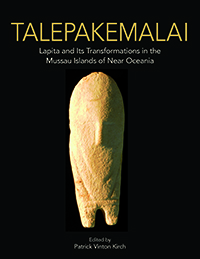The field and laboratory recording systems and databases used by archaeologists in the complex process of converting an in situ depositional context of cultural materials—a site—to a curated “archaeological record” are not trivial matters, for such systems of recording, indexing, and retrieving data impose a certain structure by their very existence. The importance of standardized recording procedures was recognized by the organizers of the 1985 Lapita Homeland Project, who provided all field teams with preprinted excavation recording forms, in self-carbon duplicate sets. The intent was that each field team would retain the top copy, submitting the duplicate to the Australian National University, where data would be coded and entered into a Lapita Homeland Project-wide database using the MINARK software program. Regrettably, this well-planned scheme did not materialize, as some team directors failed to use the preprinted forms, and because funds were not available for data coding and computer entry after the conclusion of fieldwork.
For the 1986 and 1988 expeditions, I modified the field recording forms, with improvements based on our 1985 experience. This “level form,” an example of which is shown in Figure 3.5, provides the primary record for each excavated level. The sheet records provenience data, sieve size and wet/dry recovery data, whether depth was recorded below datum or below surface, start and end depths for the level, diagrams of all features at the start and end of excavation, descriptions of sediment, recovered finds, etc., and a list of all objects provenienced by x, y, and z (depth) coordinates. In addition, I maintained a daily log, and recorded stratigraphic profiles of excavated units in standardized bound field notebooks. Three additional preprinted forms were used to assist in processing and recording of excavated materials in the field laboratory: (1) The first was a “small finds form” on which the washed and sorted pottery sherds from each level were enumerated according to sherd type (rims, body sherds, etc.) and decorative technique. Also recorded on the small finds sheet were data on coral oven stones, and on worked shell debris (chipped Trochus and Conus shell detritus from the manufacture of shell artifacts) determined during the processing of shell midden. (2) The second form recorded weight and NISP/MNI counts of mollusks. (3) The third form (used in 1988 only) recorded standard measurements on individual midden shells. Examples of these field laboratory forms are illustrated below.
Upon our return from the field, finds were unpacked and checked against the level and small finds forms, catalog numbers written on all objects with indelible ink, and the following standard data set was coded for entry into the computer database: (1) item code, or catalog number, based on the site/unit/level provenience; (2) item type, whether artifact, faunal or floral sample, or other material; (3) raw material; (4) class (e.g., rim sherd, flake, adze, or specific taxon in the case of floral and faunal materials); (5) count (1 in the case of individual artifacts); (6) weight (in grams); and (7) a free-form comments field. These data fields were coded not only for all excavated artifacts, but for all floral and faunal materials (including those discarded in the field), and other kinds of samples.
The software and hardware utilized for this Mussau Project Database have changed several times over the 35-year life of the project, reflecting the rapid advances in computer technology from the mid-1980s to the present. A prototype of the database with over 14,000 entries was first developed at U. C. Berkeley using the UNIX platform on two networked SUN 3/50 workstations in the Oceanic Archaeology Laboratory; the database software used was Sybase SQL. In 1991, we transferred the database (which now exceeded 16,000 records) to a stand-alone PC, using Borlan’s PARADOX for DOS. This software proved much easier to use, while continuing to allow relational queries. Data could be transported to Borlan’s QUATTRO-PRO spreadsheet program, which provided a variety of statistical routines and graphical displays. For more complex statistical analyses, we used the SPSS and SAS software packages. Eventually, PARADOX ceased to be supported, and the database files were once again transferred, to Microsoft Access and Excel formats, in which they currently reside.
The Mussau Project database includes a total of 22,727 records representing 231,874 individual artifacts, faunal and floral remains, radiocarbon samples, and other materials. In addition to the main Mussau database, several specialized databases were developed, including those for ceramics, fishbones, and obsidian. More recently, the entire corpus of diagnostic Lapita pottery from sites ECA, ECB, and EHB has been recorded digitally on the Lapita Pottery Online Database (LPOD) maintained at the Institute of History and Philology, Academia Sinica, Taiwan (http://lapita.rchss.sinica.edu.tw/web/). Additionally, datasets associated with this book have been migrated into non-proprietary formats and made available through interactive pages on this website and deposited in the UCLA Library repository for long-term preservation and access (available through the DOI in the recommended citation for each dataset).

